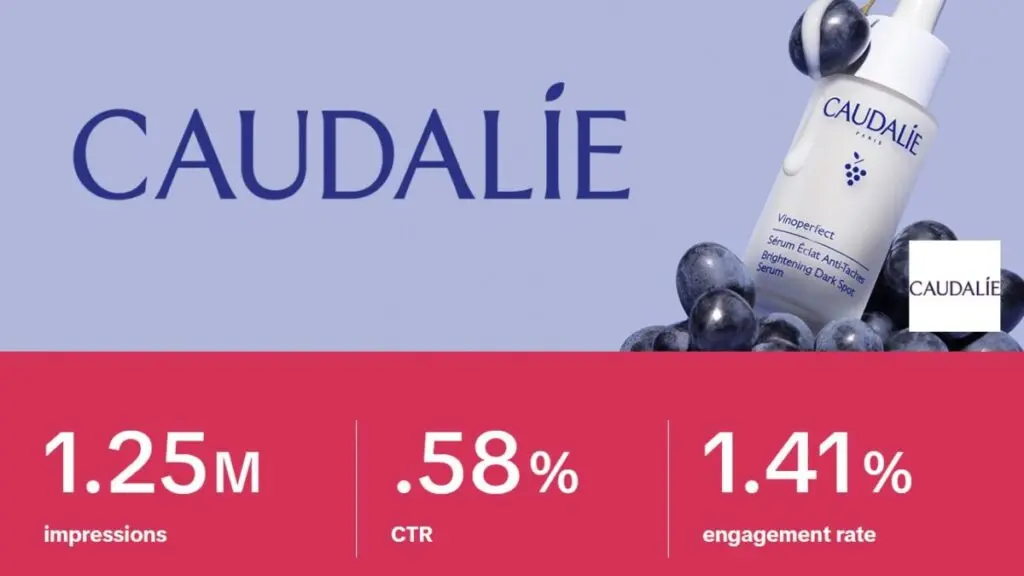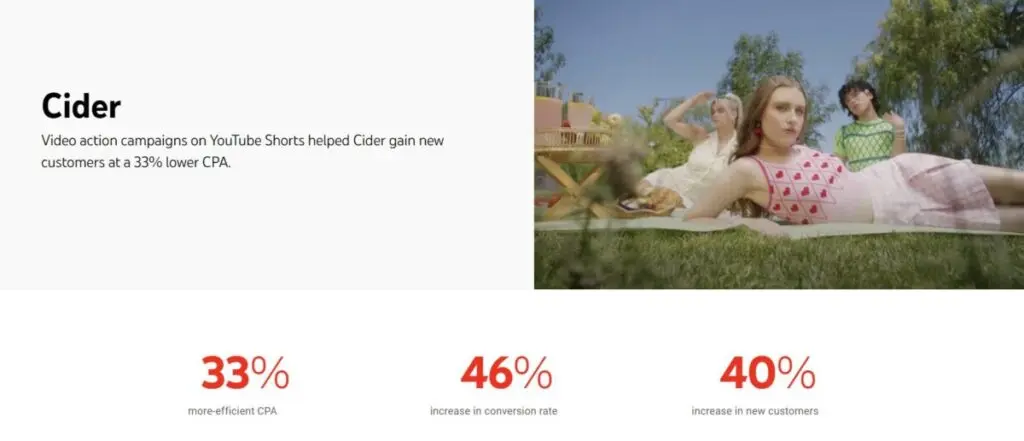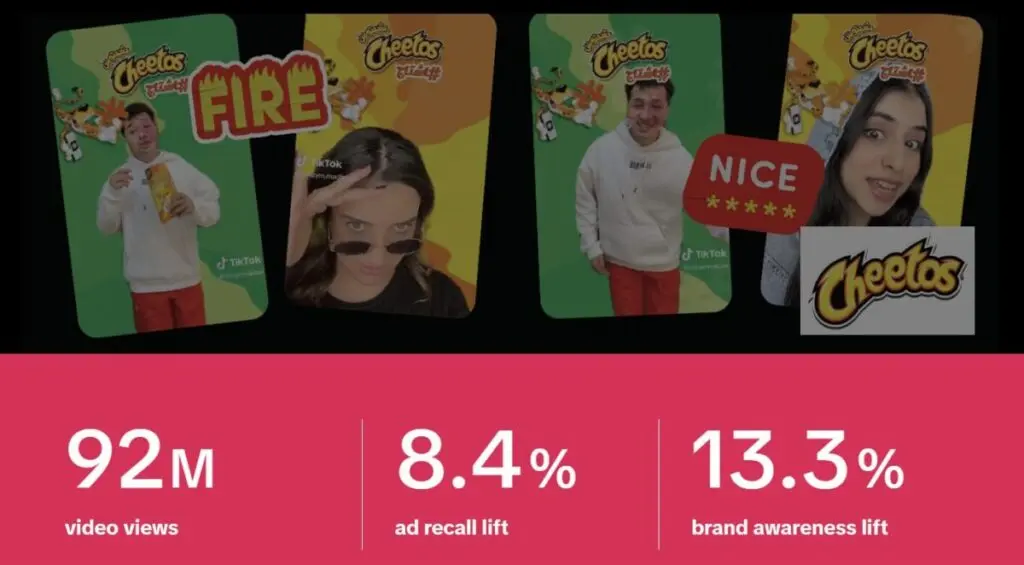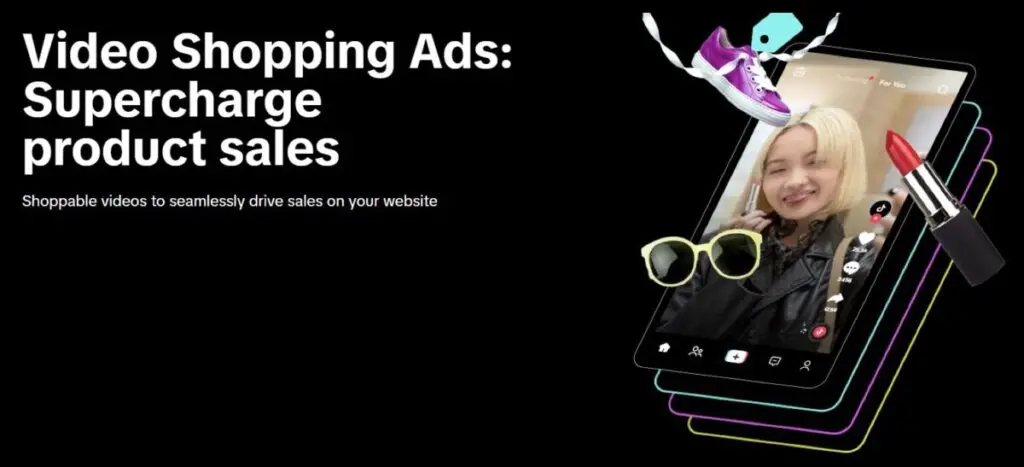Deciding between TikTok and YouTube for your business is no easy task. Both platforms offer unique advantages tailored to different marketing goals and understanding their individual strengths is key.
TikTok thrives on immediate, trend-driven engagement, making it ideal for brands targeting younger audiences with viral content. YouTube, on the other hand, excels in fostering long-term engagement through detailed, in-depth content and diverse advertising options.
This article will explore the key differences and similarities between these platforms, helping you determine which one aligns best with your marketing goals and target audience. Read on to discover how each platform can boost your brand's presence and effectiveness.
TikTok vs. YouTube: Which Platform Is Best For Your Business?
- TikTok vs. YouTube: Which is worth your time?
- Content Creation and Consumption Dynamics
- User Demographics and Engagement Trends
- Platform Algorithms and Content Discovery
- Community Building and Brand Loyalty
- Advertising Options and Marketing Potential
- TikTok Vs. YouTube: Choosing the Right Platform for Your Business
- Frequently Asked Questions
TikTok vs. YouTube: Which is worth your time?
Before we dive into a detailed comparison of the two popular platforms, let’s take a look at some of the key differences between TikTok and YouTube:
Aspect TikTok YouTube Primary Content Type Short-form, trend-driven, user-generated content Long-form, in-depth videos, and live streams Average Daily Time Spent 58 minutes and 24 seconds 47.5 minutes Main Demographics 18-24 years old (largest group), 25-34 years old 25-34 years old (largest group), 35-44 years old Content Discovery Aggressive algorithm promoting viral content on the "For You" page Personalized recommendations based on watch time, user engagement, and SEO optimization Best Performing Ads Branded challenges, influencer collaborations Sponsored content, non-skippable video ads Monetization Ease Moderate, requires strategic use of Branded Missions and Creator Rewards Program High, through the YouTube Partner Program and AdSense Engagement Strategy Viral challenges, remixing content (duets, stitches), interactive tools Consistent, high-quality content, direct engagement through comments, live streams, and community posts Community Building Fast-paced, trend-driven, fosters immediate engagement but short-lived Long-term subscriber relationships, builds through sustained content and exclusive offers
While TikTok and YouTube have distinct features, they share several similarities that make them powerful platforms for content creation and marketing. Both platforms prioritize user-generated content, allowing creators to connect with audiences through engaging videos. They also utilize algorithms to promote content; TikTok is more aggressive, leading to rapid virality, while YouTube focuses on personalized recommendations for sustained engagement.
Additionally, both platforms offer various ad formats and collaboration opportunities with influencers, providing brands with multiple ways to reach their target audience. From branded challenges on TikTok to sponsored content on YouTube, these platforms enable effective marketing strategies tailored to their unique user bases. As we proceed, we’ll explore these aspects in detail, comparing their strengths and opportunities for businesses.
Content Creation and Consumption Dynamics
TikTok: Fast-Paced, Trend-Driven Content
Trends play a significant role in TikTok's content creation dynamics. Challenges, viral sounds, and trending hashtags drive much of the content on the platform. Users and creators actively participate in these trends, adding their unique twist to popular challenges and sounds, which further amplifies their reach.
@jimhensoncompany It’s true… the puppets run the place? #thejimhensoncompany #jimhenson #puppets #puppetry #hensonpuppets #tiktokviral #fyp #hensontiktok #fragglerock #fragglerockbacktotherock #farscapenow #foryoupage #worklife #workmemes #ofcourse #ofcoursetrend #lanyrinth #darkcrystal ♬ original sound - The Jim Henson Company
This trend-driven environment offers brands an excellent opportunity to engage with a vast audience by tapping into current trends and creating relatable content. It’s precisely what Caudalie, a French skincare brand, did in an attempt to boost awareness and sales of their Vinoperfect Serum during the 2023 holiday season. Partnering with TikTok, they participated in the TikTok Beauty Gift Guide, featuring content by creator Roger Ma.

Source: tiktok.com
This strategy utilized TikTok's Top Feed and Traffic objectives, surpassing CPM and CPC benchmarks, and garnering 1.25 million impressions. The campaign also enhanced paid search performance, leading Caudalie to plan further collaborations with TikTok Beauty.
TikTok has also been shifting towards supporting longer videos to compete with platforms like YouTube. Since the introduction of longer videos in 2022, the interest in long-form storytelling has grown significantly, with users now spending 50% of their time watching videos longer than one minute.
To support this shift, TikTok introduced the Creator Rewards Program, which rewards creators for high-quality, original content over one minute long. This program uses an optimized rewards formula focusing on originality, play duration, search value, and audience engagement. These metrics ensure that creators who produce engaging and valuable content are adequately rewarded, further encouraging the production of longer videos
YouTube: Long-Form, Deep-Dive Content
YouTube offers diverse content creation and consumption dynamics, catering to a wide range of user preferences. The platform's flexibility in content length and type makes it a hub for both long-form and short-form videos, as well as live streaming.
Traditional long-form videos remain a cornerstone of YouTube. These videos, often ranging from 10 minutes to an hour or more, allow creators to delve deeply into topics, provide detailed tutorials, and engage viewers with comprehensive content. This format is particularly popular for educational content, vlogs, and in-depth reviews, catering to users who seek extensive and informative videos.
Recognizing the growing demand for short-form content, YouTube introduced YouTube Shorts back in 2020. These bite-sized videos, limited to 60 seconds, are designed to capture quick moments and trends, appealing to users' desire for fast, engaging content. Shorts are easily discoverable on the platform, driving high engagement and rapid viewership.
They offer a significant opportunity for creators to reach new audiences and for brands to create quick, impactful messages. YouTube shorts accounted for 70 billion views per day in 2023, proving to be a stellar success for the platform.
Cider, an online fashion retailer, leveraged YouTube Shorts for their Video Action Campaigns to boost customer acquisition. By utilizing vertical video assets and combining in-market audience targeting with custom intent targeting, Cider achieved a 33% more efficient cost per acquisition (CPA) and a 40% increase in new customers.

Source: youtube.com
Additionally, they saw a 46% increase in conversion rate. The campaign focused on defining add-to-cart as a conversion goal, significantly enhancing their remarketing efforts and overall campaign efficiency.
In addition to standard video formats, YouTube Live provides a dynamic way for creators to connect with their audience in real-time. Live streaming is used for various purposes, including live events, Q&A sessions, and gaming streams.
The interactive nature of live streaming, with features like live chat, Super Chat, and real-time engagement, enhances the viewer experience and fosters a sense of community. For brands, live streaming offers a way to engage directly with viewers, showcase products, and build real-time connections.
User Demographics and Engagement Trends
TikTok YouTube Primary User Demographic 18-24 years old 25-34 years old Secondary User Demographic 25-34 years old 35-44 years old Average Daily Time Spent 58 minutes and 24 seconds 47.5 minutes Engagement Immediate engagement Long-term engagement
TikTok: Young User Base
TikTok has firmly established itself as a dominant social media platform, particularly among younger demographics. The largest demographic on TikTok consists of users aged 18-24, with females in this age group comprising 23.8% of the platform's user base, while males in the same age range make up 17.9%. This age group is crucial for brands targeting Gen Z, as these users are highly active and engaged on the platform.
The platform's short-form, engaging content format is particularly appealing to this demographic, making it an ideal medium for marketing campaigns focused on creativity and interactivity. Additionally, TikTok has seen a notable rise in users aged 25-34, who now represent 17.1% of the user base for females and 13.9% for males. This demographic shift indicates that TikTok is not just a platform for teenagers but is also increasingly popular among young adults.
In terms of engagement, TikTok users are highly active, spending an average of 58 minutes and 24 seconds on the app daily in 2024. This high level of engagement underscores the platform's ability to capture and retain user attention, making it an effective channel for brands to reach and interact with their target audiences.
Furthermore, TikTok is an excellent channel for brands seeking immediate engagement boosts. The algorithm’s effectiveness in rapid recommendations results in high initial interaction rates. This ability to quickly increase video views and likes can drive short-term brand visibility and engagement. However, it's important to note that these engagement boosts are often short-lived, requiring consistent content creation to preserve momentum.
YouTube: Diverse Audiences
YouTube's user demographics make it an essential platform for brands aiming to reach a broad audience. The largest age group on YouTube is users aged 25-34, accounting for 21.3% of the total user base. This group includes 12.2% males and 9.1% females.
Following closely is the 35-44 age group, making up 17.5% of users, with more males (9.6%) than females (7.9%). Collectively, these two age groups represent a significant portion of YouTube’s audience, making up 38.8% of users.
The most popular type of content on YouTube includes entertainment, educational videos, product reviews, and how-to guides. Younger users, particularly those aged 18-24, frequently use YouTube to watch content that fits their current mood, with many seeking relaxing or informative videos. This age group, while smaller than the 25-34 demographic, still makes up 15.5% of YouTube’s user base and represents an active segment that brands can effectively target.
As for engagement trends on YouTube, users spent an average of 47.5 minutes per day on the platform in 2023. Although TikTok sees higher engagement levels, YouTube is just as effective at retaining audience attention. This is driven by diverse content and personalized recommendations, underscoring the platform’s strong position in the digital media landscape.
Platform Algorithms and Content Discovery
Feature TikTok YouTube Algorithm Focus For You Page (FYP) Recommendations and Search Key Algorithm Metrics User interactions, video information, device/account settings Watch time, click-through rate (CTR), user engagement, video freshness Content Discovery Rapid content discovery and audience growth Personalized video suggestions based on viewing history and preferences SEO and Keyword Optimization Leveraging trending hashtags and engaging captions for visibility Optimizing video titles, descriptions, and tags with keywords for Google search Content Format Short-form, engaging videos Diverse long-form content Search Engine Integration In-app search functionality Integrated with Google search, discoverability through YouTube and Google
TikTok: The Power of the For You Page
TikTok's algorithm is renowned for its ability to drive rapid content discovery and audience growth, making it highly attractive for brands looking to increase their visibility. Central to TikTok's content discovery process is the "For You" page, a personalized feed where users are constantly exposed to videos that match their interests and engagement patterns. This page is curated based on several key algorithm metrics:
- User interactions (likes, shares, comments, completion rate)
- Video information (captions, hashtags, sounds, search value)
- Device/account settings (geolocation, language preferences)
Videos that receive high engagement are more likely to be promoted to FYPs, thereby increasing their visibility. Brands can optimize their content by incorporating trending hashtags and engaging captions, increasing the likelihood of their videos being featured prominently. Leveraging TikTok SEO by inserting keywords into captions and hashtags is important for maximizing video discoverability through search.
TikTok's algorithm is more aggressive than YouTube’s, offering faster audience growth by rapidly amplifying content that resonates with users. This aggressive promotion can result in viral trends and exponential growth in followers within a short period, making it a powerful tool for brands aiming to quickly build a large and engaged audience.
The ability to reach a vast number of users organically is particularly advantageous for brands with limited advertising budgets, enabling them to achieve significant impact without substantial financial investment.
YouTube: Leveraging Recommendations and Search
The primary metrics that influence YouTube's algorithm and determine the visibility of videos in search results and recommendations include:
- Watch time,
- Click-through rate (CTR)
- User engagement (likes, comments, shares)
- Video freshness
The recommendation system on YouTube is designed to keep users engaged by suggesting content that aligns with their viewing history and preferences. It uses a mix of real-time data and historical behavior to curate personalized video suggestions on the homepage, in the sidebar, and at the end of video playbacks. This system heavily relies on watch time, rewarding videos that keep viewers on the platform longer with higher visibility.
SEO and keyword optimization are also vital for making videos discoverable through Google search. YouTube is the second-largest search engine, and its videos frequently appear in Google search results.
Brands should optimize their video titles, descriptions, and hashtags with relevant keywords to enhance visibility. This includes using keywords that potential viewers are likely to search for and ensuring that the metadata accurately reflects the content of the video.
Incorporating closed captions and transcripts can further improve searchability, as these elements provide additional text for the algorithm to index. By focusing on SEO and keyword optimization, brands can ensure their videos reach a wider audience both on YouTube and through Google search, enhancing their overall digital presence and marketing effectiveness.
Community Building and Brand Loyalty
Aspect TikTok YouTube Primary Focus Fast-paced, trend-driven content Long-term subscriber relationships Key Features Challenges, duets, stitching, trends Memberships, Super Chats, consistent content Community Engagement User-generated content, interactive features Comments, community posts, live streams Monetization Branded challenges, Creator Rewards Program, ads Memberships, Super Chats, ads Engagement Strategy Viral challenges, remixing content, native interactive tools High-quality, consistent content, direct engagement Audience Interaction Collaborative content, promoting user-generated content Subscriber perks, exclusive content Brand Loyalty Builds through participation in trends and challenges Builds through sustained content and exclusive offers
TikTok: Fostering a Dynamic and Interactive Community
TikTok excels in fostering community building and brand loyalty through its signature features and interactive content. The platform's emphasis on challenges and trends encourages users to participate in a shared experience, creating a sense of community. Brands can leverage these viral challenges to engage users and build a loyal following.
An effective way to build community on TikTok is through branded challenges. By creating a challenge that encourages users to create their own videos using a specific hashtag, brands can generate a large volume of user-generated content. This not only increases visibility but also fosters a sense of participation and connection among users.
For example, Cheetos Egypt partnered with TikTok to launch their hashtag-shaped Cheetos using a Branded Hashtag Challenge and Branded Effect, targeting Gen Z. They collaborated with popular creators known for Music Lipsync content to lead a dance challenge, encouraging participation using the hashtag #شيتوس_هاشتاج_ورقصة_الزجزاج.
Spark Ads boosted the creators' videos, achieving 92 million video views and 11.3 million unique users, far exceeding benchmarks. The campaign saw over 13,000 user-generated videos and significant brand lift, with an 8.4% increase in ad recall and a 13.3% increase in brand awareness.

Source: tiktok.com
TikTok's native features, such as duets and stitching, allow users to remix and build on existing content. Brands can encourage their followers to use these features to create collaborative content. Furthermore, it is important for businesses on TikTok to actively engage with users by responding to comments and promoting user-generated content. It builds trust among consumers and increases loyalty.
YouTube: Building Long-Term Subscriber Relationships
One of the most effective ways to build a community on YouTube is through cultivating long-term subscriber relationships. Consistent, high-quality content encourages viewers to subscribe, ensuring they return for more. Engaging directly with subscribers through comments, community posts, and live streams helps build a sense of connection and loyalty.
Memberships offer another powerful way to build community. By offering channel memberships, creators can provide exclusive content, badges, and perks to their most dedicated fans. This not only generates a steady revenue stream but also makes subscribers feel like valued members of a community.
For instance, popular channels often offer behind-the-scenes content, early access to videos, and special shoutouts to members, fostering a deeper connection. Partnering with the right creator can be equally effective, as they can offer your brand increased visibility among your target audience.
It proved the right tactic for Hershey's, which collaborated with creators to launch their limited-edition Hot Cocoa KISSES. This strategy led to a 551% increase in search and a 22% increase in purchase intent. By leveraging creator-driven branded content and targeted bumper ads, Hershey's effectively stood out in a saturated market and enhanced their product's visibility.

Source: youtube.com
Super Chats and Super Stickers are additional features that enhance community engagement during live streams. Fans can purchase Super Chats to highlight their messages, making them more visible to the creator and other viewers. This interactive feature not only supports the creator financially but also boosts engagement by allowing fans to participate more actively in live streams.
Creators with loyal fan bases play a significant role in community building. These creators often have a strong, personal connection with their audience, which can be leveraged for brand partnerships. Collaborating with influencers who have dedicated followings can help brands tap into established communities and build trust quickly.
Advertising Options and Marketing Potential
TikTok: Influencer Collaborations and Viral Campaigns

Source: tiktok.com
Influencer collaborations and viral campaigns are at the heart of TikTok’s marketing potential. Partnering with popular influencers allows brands to reach large audiences quickly, leveraging the influencers' established trust and engagement with their followers. Viral campaigns, often driven by challenges and hashtags, encourage user participation and can rapidly increase brand visibility.
TikTok offers a variety of other advertising options that allow brands to engage with its highly active and diverse user base. These ad formats cater to different marketing goals, from boosting visibility to driving user engagement:
- In-Feed Ads: Native ads that appear in the "For You" feed, supporting objectives like traffic, app installs, and video views.
- TopView Ads: Ads that appear when users first open the app, offering high visibility and immediate engagement.
- Branded Hashtag Challenges: Unique hashtags and challenges that encourage user-generated content, boosting engagement.
- Brand Takeover: Full-screen ads that appear upon app opening, featuring images, GIFs, or videos linked to a landing page.
- Spark Ads: Ads that boost organic content mentioning the brand, increasing reach and engagement.
- Pangle Ads: Video ads running within TikTok's network of partner apps, extending reach beyond the platform.
Additionally, brands can create custom filters and stickers that users can apply to their videos, encouraging organic engagement. User-generated content, particularly through branded challenges, helps spread brand messages widely as users share their own takes on the challenges, further promoting the brand.
YouTube: Video Ads and Sponsored Content
Video ads and sponsored content are the primary advertising formats on YouTube, appearing before, during, or after videos. These ads can be highly targeted based on user demographics, interests, and behavior, ensuring that brands reach their desired audience:
- Skippable Video Ads: Ads that can be skipped after 5 seconds, offering flexibility for viewers and brands.
- Non-Skippable Video Ads: 15-20 second ads that must be watched before the video content.
- Bumper Ads: Short, 6-second ads that are non-skippable, designed for brief messaging.
- Display Ads: Ads that appear alongside video content on the right-hand sidebar, visible on desktop.
- Masthead Ads: Ads that appear at the top of YouTube's homepage for 24 hours, providing extensive reach.
- Outstream Ads: Ads that appear on partner sites and apps outside of YouTube, designed to increase reach beyond the platform.
- In-Feed Video Ads: Ads that appear in the YouTube search results encouraging viewers to click and watch.
Sponsored content, where brands collaborate with popular YouTube creators, allows for authentic and engaging promotions that resonate with the creator's loyal fan base. Collaborations with creators enable brands to tap into established communities and leverage the trust and influence they have with their audiences. These collaborations can take the form of product placements, dedicated reviews, or integrated sponsorships, providing multiple touchpoints for brand messaging.
Compared to TikTok, YouTube offers a more straightforward and established monetization process. YouTube creators can easily join the YouTube Partner Program once they meet the eligibility criteria, allowing them to start earning revenue from ads quickly.
AdSense integration further simplifies the monetization process, making it easy for creators to track their earnings and manage their ad settings. This accessibility makes YouTube an appealing platform for both new and established brands looking to maximize their marketing potential.
TikTok Vs. YouTube: Choosing the Right Platform for Your Business
Both TikTok and YouTube offer unique strengths for marketing your brand. TikTok excels in immediate, trend-driven engagement and is particularly effective in reaching younger audiences with its viral content and interactive features.
YouTube, on the other hand, provides long-term engagement through in-depth content and a diverse range of advertising options, making it ideal for sustained viewer relationships and detailed storytelling. Ultimately, the best platform for your business will depend on your specific marketing goals and target audience.
Frequently Asked Questions
Is TikTok or YouTube better for building an audience?
YouTube is generally preferred for building a long-term audience due to its larger user base and extensive content longevity. TikTok is excellent for quickly building an engaged audience through viral challenges and interactive features. Each platform offers unique benefits depending on whether immediate or sustained audience growth is the goal.
Is TikTok only for younger audiences?
No, TikTok is not only for younger audiences. While the largest demographic on TikTok consists of users aged 18-24, the platform also has a notable presence among users aged 25-34. This shows that TikTok is increasingly popular among young adults, making it a versatile platform for engaging a broader audience.
How does the virality on TikTok compare to YouTube?
TikTok is known for its high virality, enabling users to achieve significant view counts quickly through its trend-driven algorithm.
Does YouTube or TikTok generate more ad revenue?
YouTube typically generates more ad revenue due to its established monetization systems and broader advertiser base.
What type of content performs best on TikTok vs. YouTube?
On TikTok, short, engaging, and trend-driven content performs best. On YouTube, long-form, in-depth, and informative videos are more successful.
Is it beneficial to create content for both TikTok and YouTube?
Yes, creating content for both platforms can maximize reach and engagement. However, it's important to tailor your content to each platform—use vertical videos for TikTok and horizontal videos for YouTube, unless you’re specifically creating for YouTube Shorts.





